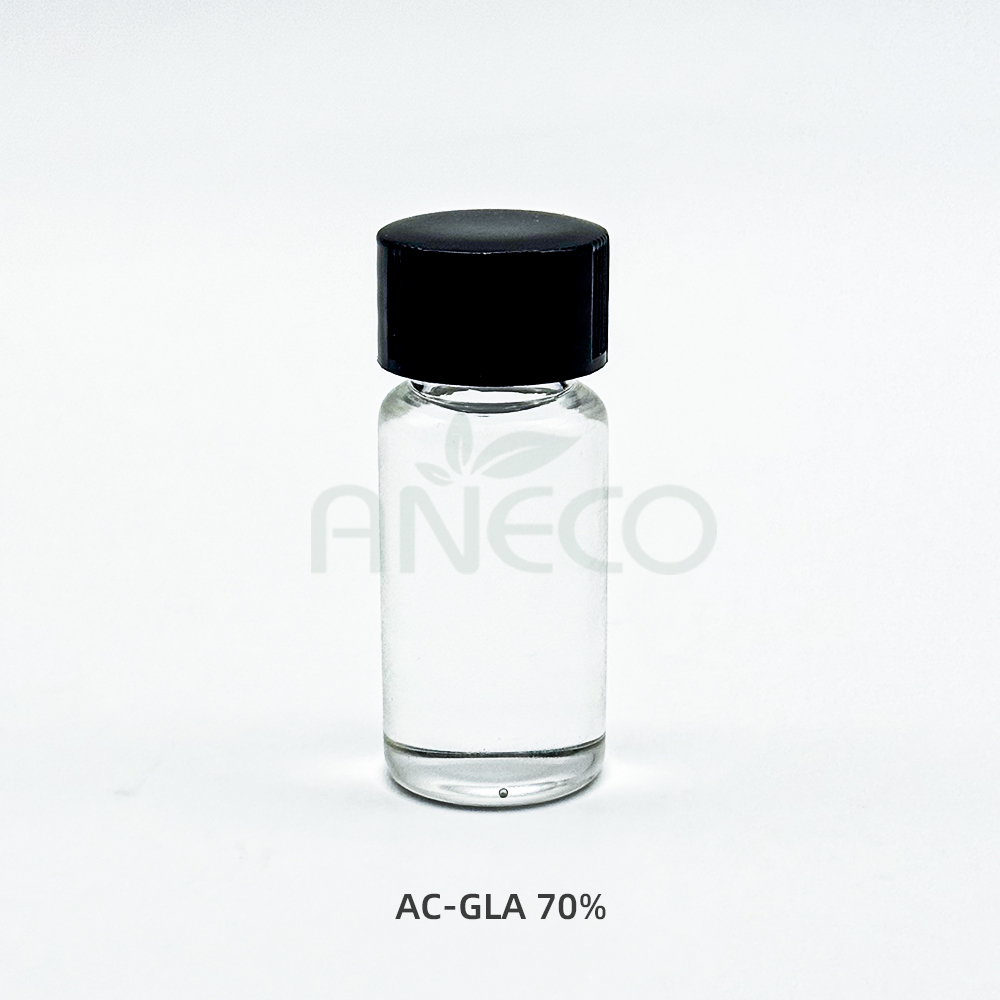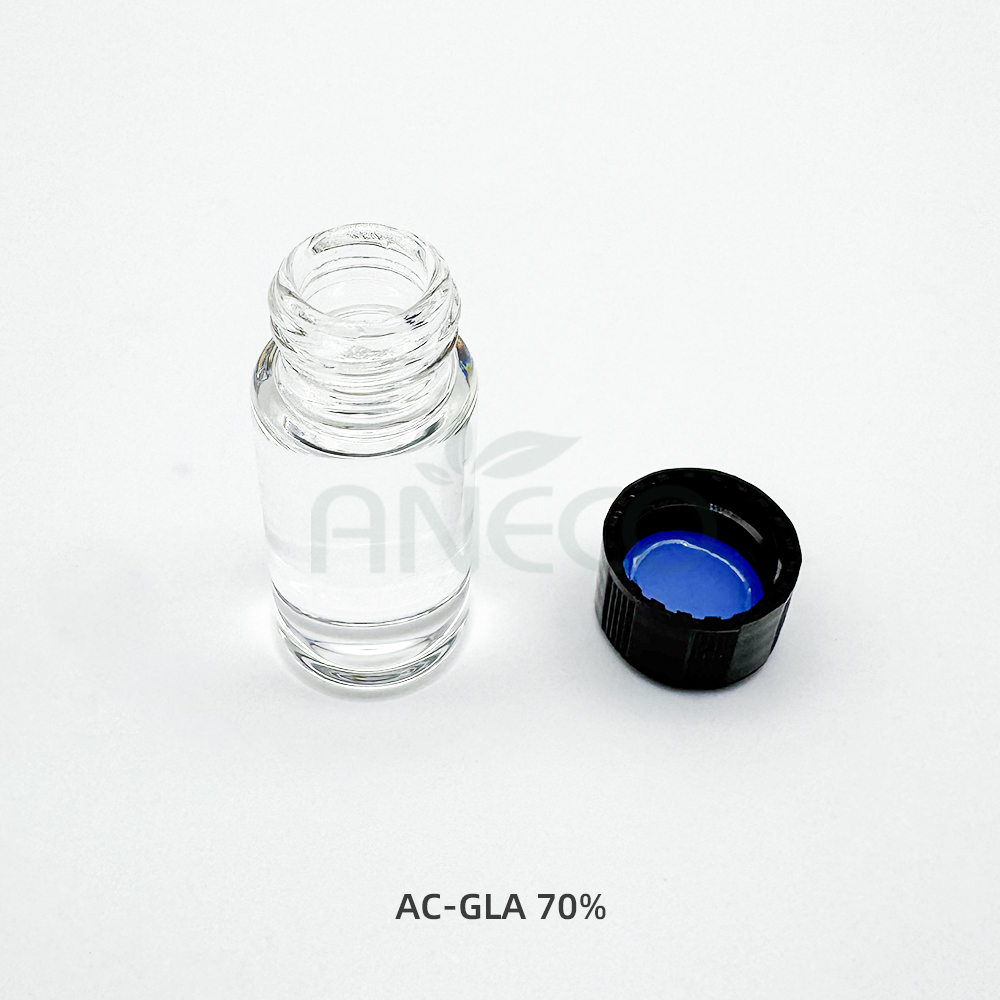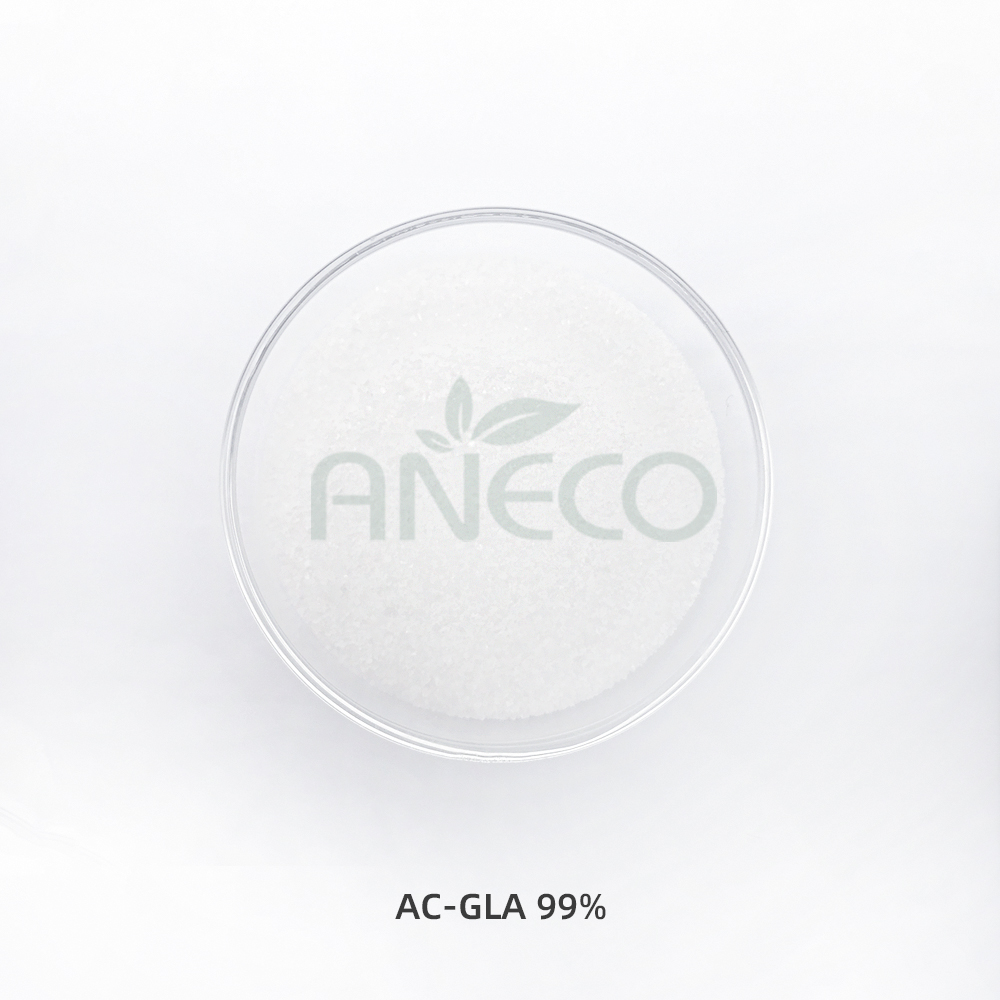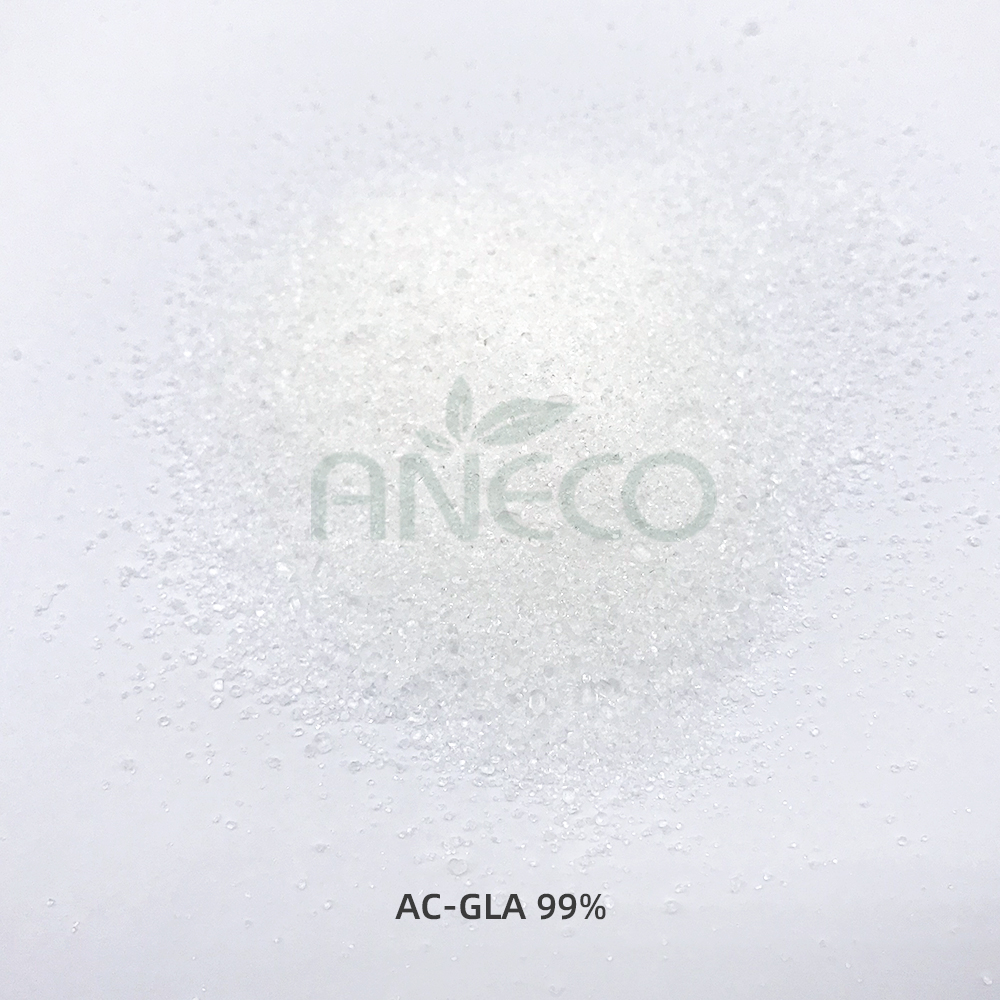






AC-GLA
Glycolic acid is the smallest molecular weight alpha hydroxy acid (AHAs). It is currently used most frequently in skin care and skin rejuvenation to moisturize, and promote epidermal renewal. It can effectively penetrate the pores of the skin and solve problems such as skin aging, wrinkles, dark spots and acne in a short time.



REQUEST A SAMPLE
BACKGROUND

AHA (Alpha Hydroxy Acid) is a small-molecule organic acid first reported in 1974 by Dr. Van Scott and Dr. Ruey Yu. Naturally found in fruits, yogurt, and sugarcane, AHAs are non-toxic carboxylic acids with hydroxyl groups at the α position. Known for their strong skin permeability and safety, they are widely used in cosmetics and dermatology for exfoliation, acne treatment, and improving photoaging and pigmentation.
DESCRIPTION

AC-GLA 70% is a purified liquid form of glycolic acid. It is an aqueous solution at 70% concentration.
ADVANTAGES

1. The smallest molecular weight and the strongest permeability
2. Excellent exfoliating and skin renewal capabilities
3. Effectively enhance the absorption of active ingredients
4. Dual-Action in anti-aging & skin-revitalizing
EFFICACIES

• Promote collagen synthesis: penetrate deep into the dermis, stimulate the activity of fibroblasts, and promote the production of collagen and elastic fibers;
• Moisturize and lock in moisture: form a protective film on the skin surface to prevent moisture from escaping;
• Brighten skin tone and lighten spots: remove aged stratum corneum, promote epidermal renewal, and reduce melanin deposition on the surface of the skin;
• Exfoliate and renew the epidermis: react with keratin in keratinocytes, weaken the connection between keratinocytes, and thus promote the shedding of aged stratum corneum.
FAQ

Q1:What are the applications of glycolic acid in dermatology?
A1:
①Acne.
②Pigmentary disorders such as chloasma and post-inflammatory pigmentation.
③Skin aging.
④Others: For instance, it has excellent therapeutic effects on various types of ichthyosis and lichen hair, restoring the skin to normal.
Q2:What advantages does glycolic acid have over salicylic acid?
A2:
① The smallest molecular weight and strong penetration:
Glycolic acid is the α -hydroxy acid with the smallest molecular weight, only 76 Da. It has excellent water solubility and can quickly penetrate the stratum corneum of the epidermis and reach the superficial dermis of the skin, directly stimulating the synthesis of collagen.
Salicylic acid has a molecular weight of 138 Da and is lipid-soluble. It mainly acts on the oil in the pores, but has a relatively weak stimulating effect on the dermis.
② Efficiently remove old and dead keratin:
Glycolic acid strongly promotes epidermal renewal by breaking the intercellular connection bonds (ionic bonds, desmosomes) of keratinocytes. Continuous use can shorten the keratin metabolism cycle (from 28 days to 14 days), significantly improving rough skin and fine lines.
Although salicylic acid can unclog pores, it has a relatively weak effect on the overall renewal of the epidermis and is more suitable for local anti-acne treatment.
③ Thicken the epidermis and strengthen the barrier:
Long-term use of low-concentration glycolic acid (such as 5% to 10%) can thicken the epidermis by up to 27%, promote the synthesis of ceramides, and enhance the skin's water retention capacity and barrier toughness.
Salicylic acid has no such effect. Excessive use may instead weaken the barrier.
④ Stimulating collagen makes anti-aging more direct:
Glycolic acid can penetrate into the dermis, activate fibroblasts, enhance the synthesis of type I and type III collagen, and improve skin elasticity and firmness.
The effect of salicylic acid is limited to pores and the epidermis, and there is no anti-aging data to support it.
BACKGROUND

AHA (Alpha Hydroxy Acid) is a small-molecule organic acid first reported in 1974 by Dr. Van Scott and Dr. Ruey Yu. Naturally found in fruits, yogurt, and sugarcane, AHAs are non-toxic carboxylic acids with hydroxyl groups at the α position. Known for their strong skin permeability and safety, they are widely used in cosmetics and dermatology for exfoliation, acne treatment, and improving photoaging and pigmentation.
DESCRIPTION

AC-GLA 99% is a highly purified crystalline form of glycolic acid for applications where avoidance of water is necessary.
ADVANTAGES

1. The smallest molecular weight and the strongest permeability
2. Excellent exfoliating and skin renewal capabilities
3. Effectively enhance the absorption of active ingredients
4. Dual-Action in anti-aging & skin-revitalizing
EFFICACIES

• Promote collagen synthesis: penetrate deep into the dermis, stimulate the activity of fibroblasts, and promote the production of collagen and elastic fibers;
• Moisturize and lock in moisture: form a protective film on the skin surface to prevent moisture from escaping;
• Brighten skin tone and lighten spots: remove aged stratum corneum, promote epidermal renewal, and reduce melanin deposition on the surface of the skin;
• Exfoliate and renew the epidermis: react with keratin in keratinocytes, weaken the connection between keratinocytes, and thus promote the shedding of aged stratum corneum.
FAQ

Q1:What are the applications of glycolic acid in dermatology?
A1:
①Acne.
②Pigmentary disorders such as chloasma and post-inflammatory pigmentation.
③Skin aging.
④Others: For instance, it has excellent therapeutic effects on various types of ichthyosis and lichen hair, restoring the skin to normal.
Q2:What advantages does glycolic acid have over salicylic acid?
A2:
① The smallest molecular weight and strong penetration:
Glycolic acid is the α -hydroxy acid with the smallest molecular weight, only 76 Da. It has excellent water solubility and can quickly penetrate the stratum corneum of the epidermis and reach the superficial dermis of the skin, directly stimulating the synthesis of collagen.
Salicylic acid has a molecular weight of 138 Da and is lipid-soluble. It mainly acts on the oil in the pores, but has a relatively weak stimulating effect on the dermis.
② Efficiently remove old and dead keratin:
Glycolic acid strongly promotes epidermal renewal by breaking the intercellular connection bonds (ionic bonds, desmosomes) of keratinocytes. Continuous use can shorten the keratin metabolism cycle (from 28 days to 14 days), significantly improving rough skin and fine lines.
Although salicylic acid can unclog pores, it has a relatively weak effect on the overall renewal of the epidermis and is more suitable for local anti-acne treatment.
③ Thicken the epidermis and strengthen the barrier:
Long-term use of low-concentration glycolic acid (such as 5% to 10%) can thicken the epidermis by up to 27%, promote the synthesis of ceramides, and enhance the skin's water retention capacity and barrier toughness.
Salicylic acid has no such effect. Excessive use may instead weaken the barrier.
④ Stimulating collagen makes anti-aging more direct:
Glycolic acid can penetrate into the dermis, activate fibroblasts, enhance the synthesis of type I and type III collagen, and improve skin elasticity and firmness.
The effect of salicylic acid is limited to pores and the epidermis, and there is no anti-aging data to support it.


